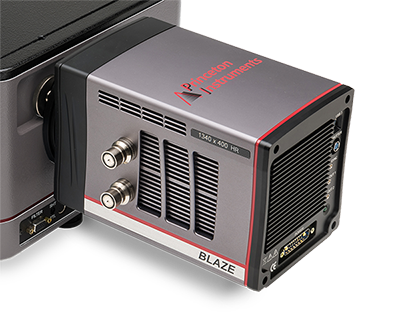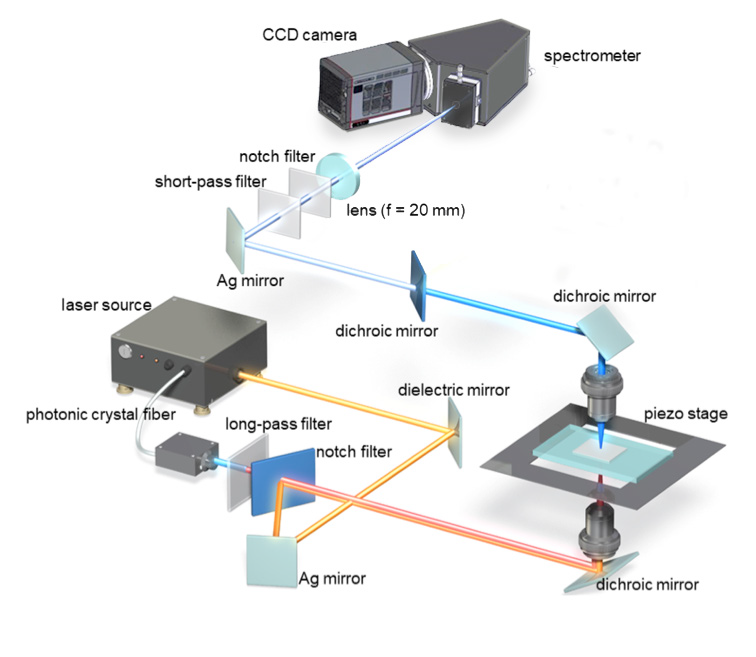Teledyne Princeton Instrument’s advanced system improves high-speed, label-free imaging of living cells
September 6, 2019
Teledyne Princeton Instruments is pleased to recognize the recent work of Associate Professor Hideaki Kano of the University of Tsukuba, Japan. Earlier this year, Dr. Kano and his colleagues performed ultra-multiplex CARS spectroscopic imaging (18 colors corresponding to 18 wavenumbers; 600 cm-1 – 3600 cm-1) on live A549 cells, reporting an effective exposure time per pixel of 1.8 msec.†
Coherent anti-Stokes Raman scattering, or CARS, allows unlabeled molecules in the human body to be identified via spectral analysis. Ultra-multiplex CARS is broad enough to detect all vibrational fundamental modes, including the critically important fingerprint region (in which unknown organic compounds can be identified and distinguished from one another) as well as the C-H and O-H stretching regions (useful for identifying the rough molecular distribution of lipids, proteins, and nucleic acids). Dr. Kano explains that the combination of this real-time, non-invasive, label-free technique and multivariate analysis methods can help life scientists and medical doctors gain meaningful insights into the dynamics of intracellular metabolic activity.
For their experiments, Dr. Kano’s research group chose a new Teledyne Princeton Instruments BLAZE camera with a proprietary ‘super-deep-depletion’ CCD designed to yield the highest near-infrared quantum efficiency of any silicon device available. The new sensor platform’s dual 16 MHz readout ports enable unprecedented spectral rates of more than 1600 spectra/second with full vertical binning and up to 215 kHz when operated in kinetics mode. The camera features a back-illuminated 1340 x 400 spectroscopic array format (20 μm square pixels) capable of being cooled down to -95°C in air, without chillers or liquid assist, for low-dark-current performance. A Teledyne Princeton Instruments LS-785 spectrograph was also utilized, as was Teledyne Princeton Instruments LightField® software.

“Before I used BLAZE, I thought the possibilities of CCD fabrication technology were actually becoming somewhat saturated,” comments Dr. Kano. “However, BLAZE drastically changed my impression… this camera opens up a bright future for spectroscopy!”
Ultra-multiplex CARS and Dr. Kano’s recent work are discussed in a new application note from Teledyne Princeton Instruments, “Ultra-Multiplex CARS Spectroscopic Imaging of Living Cells”. Currently, Dr. Kano’s research group is collaborating with a pathologist to develop a new spectroscopic diagnostic tool using the molecular fingerprint.

† Hideaki Kano, Takumi Maruyama, Junko Kano, Yuki Oka, Daiki Kaneta, Tiffany Guerenne, Philippe Leproux, Vincent Couderc, and Masayuki Noguchi, “Ultra-multiplex CARS spectroscopic imaging with 1-millisecond pixel dwell time,” OSA Continuum 2, 1693–1705 (2019). Open access: https://www.osapublishing.org/osac/fulltext.cfm?uri=osac-2-5-1693&id=409415
